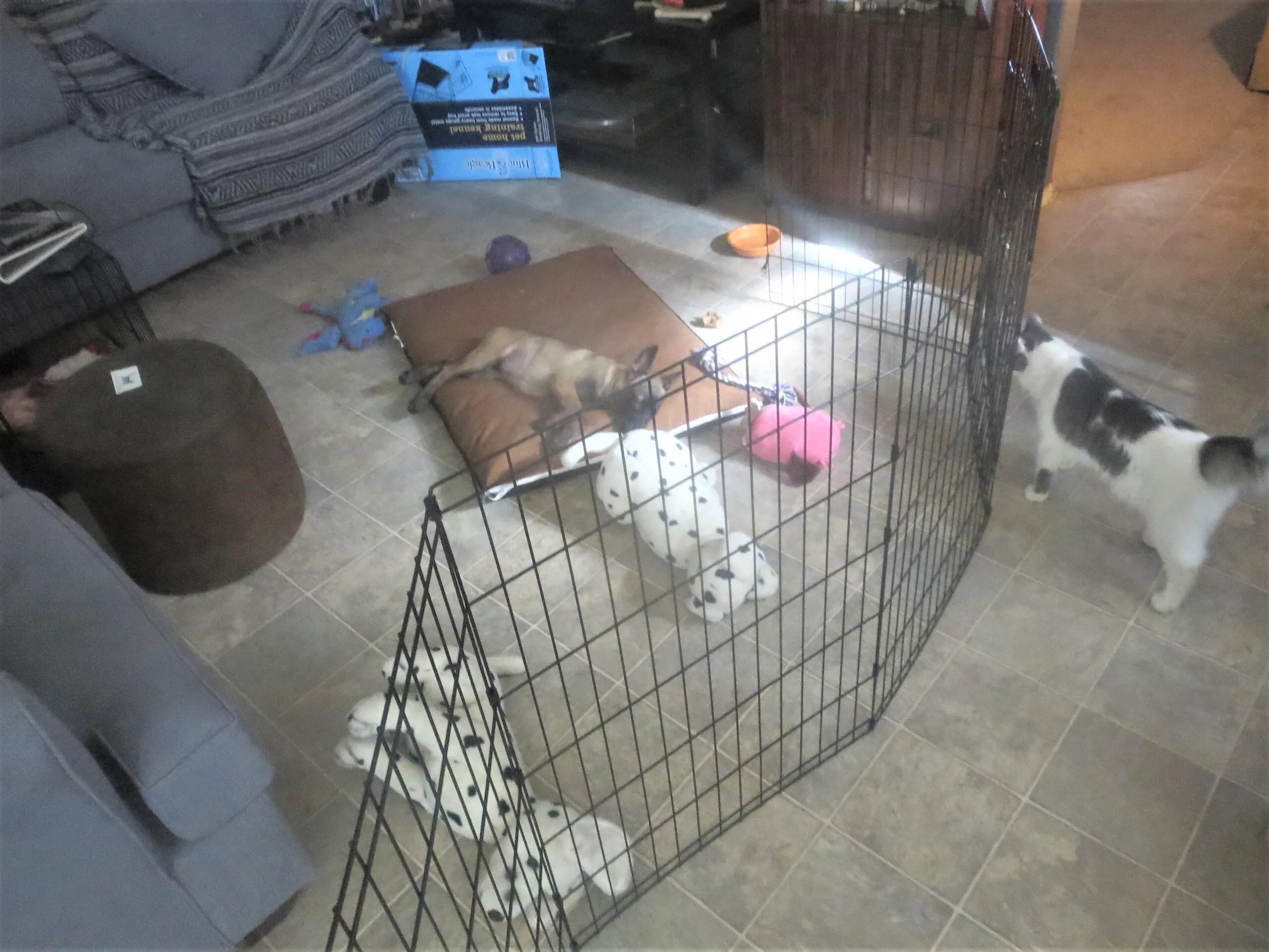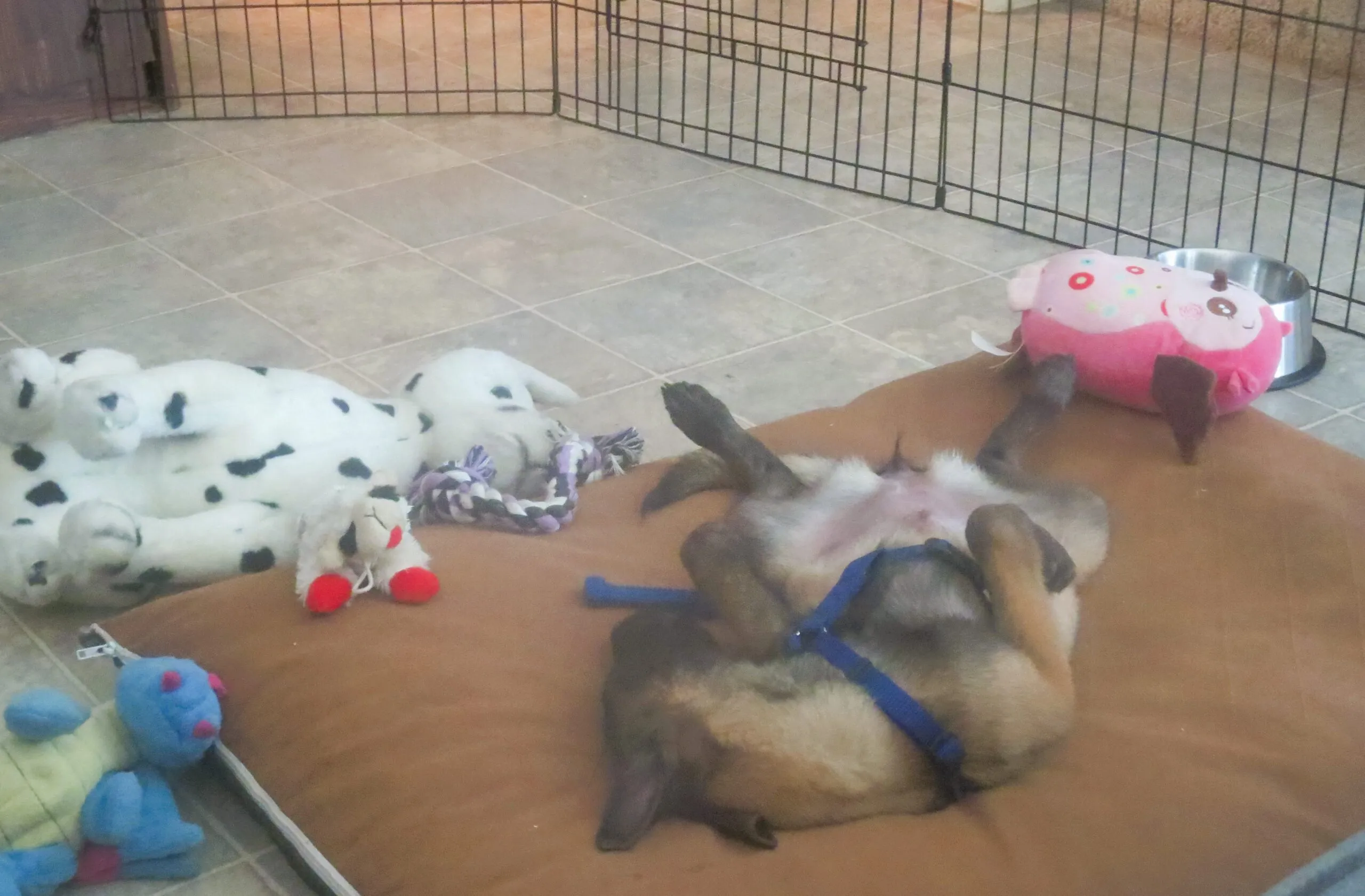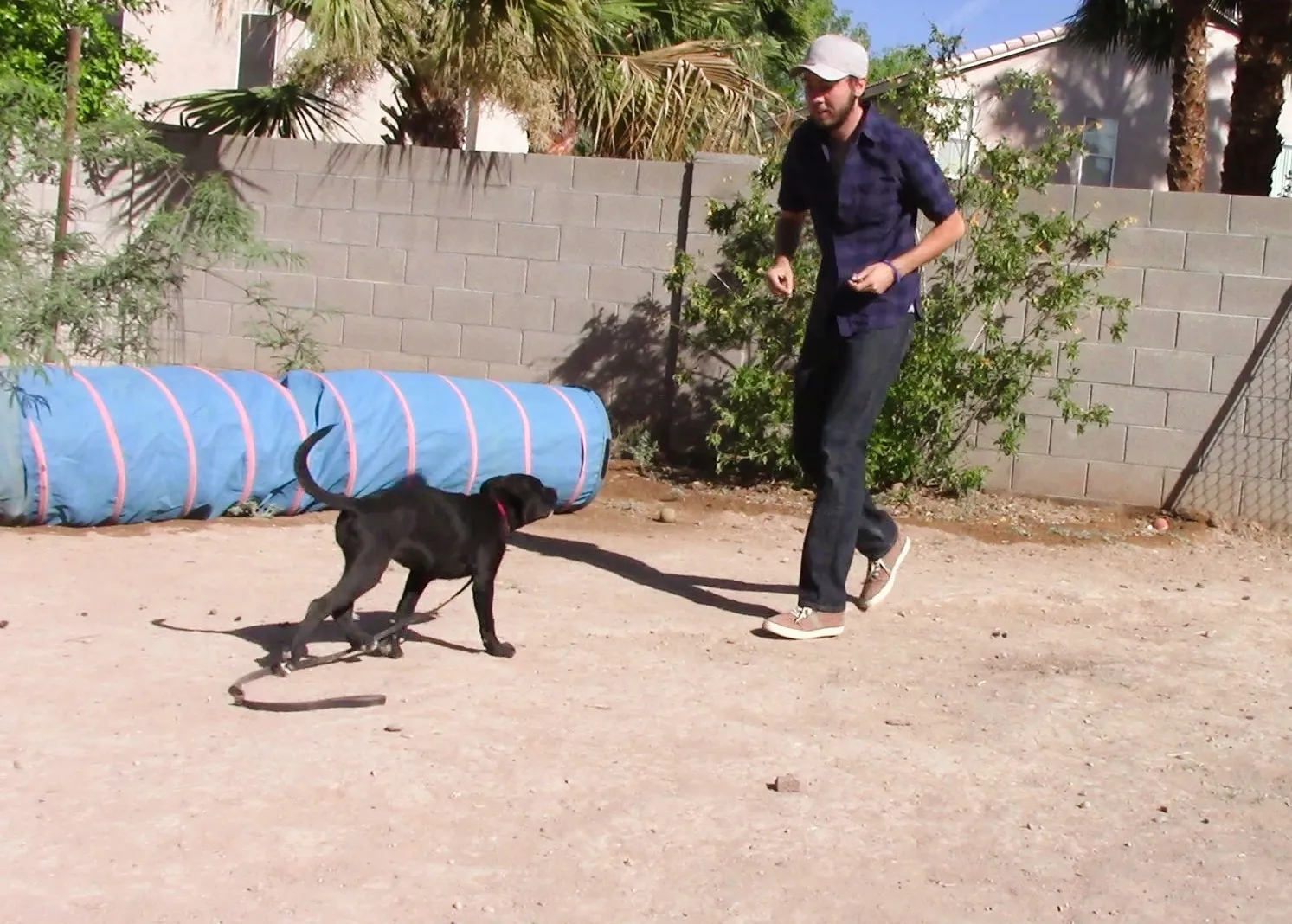Welcome to the exciting, and sometimes overwhelming, world of puppy parenthood! This isn’t just another checklist of what to buy; it’s a deep dive into the real experiences and emotions that come with bringing a new puppy home. We’ll explore not only how to prepare your physical space but also how to manage your expectations and create a realistic First Week With A New Puppy Schedule that sets you and your furry friend up for success.
I’m Jake, a dog trainer with years of experience helping new puppy parents navigate the initial challenges. My wife, Erin, and I have seen firsthand what truly makes a difference in those critical first days, and what often blindsides new owners. Our goal is to provide you with hard-won wisdom, focusing on empathy and practical strategies to help you catch your breath and begin a lifetime of adventure with your new best friend.
Understanding Your Puppy’s Perspective
Before diving into routines and training, it’s crucial to acknowledge the profound change your puppy is experiencing. Imagine being a toddler suddenly removed from everything familiar – your family, your home, your entire world. You’re thrust into a new environment, surrounded by strangers, new smells, and rules that make no sense. This is the reality for most puppies entering a new home.
We often expect puppies to instantly bond, be grateful, behave perfectly, and seamlessly integrate into our lives. However, for many, the journey to their new home is a deeply stressful experience. They’ve been separated from their mother and siblings, and for shelter puppies, there’s an added layer of fear and instability.
 A worried-looking Hazel puppy peering curiously
A worried-looking Hazel puppy peering curiously
This isn’t to say getting a puppy is a bad thing, but in our excitement, or even when battling the “puppy blues,” we must honor the experience of this tiny creature. Let empathy be your guide. This isn’t just a warm and fuzzy notion; it’s a powerful strategy that makes navigating challenges more intuitive and helps you take setbacks in stride. Remember, your puppy hasn’t even had a chance to catch their breath. When frustration sets in, recall how young they are and how unfamiliar this new world is. They don’t know you yet, but with patience and understanding, that bond will grow.
What to Expect in the Early Days
The first week with a new puppy schedule can feel like a rollercoaster of emotions and unexpected behaviors. Knowing what to anticipate can help you manage these phases.
The Honeymoon Phase
You might experience a brief, magical period where your puppy seems surprisingly calm, sweet, and gentle. This “honeymoon phase” rarely lasts more than a few hours or days. Your puppy might appear well-behaved because they are still in a state of mild shock, not because they are intentionally being “good.” As they relax and gain confidence, their true puppy behaviors will emerge.
This often leads to the real challenges, such as destroying shoes, nipping, or demanding attention with loud cries, which can be particularly challenging for owners new to understanding how to train my dog not to bark when seeking attention.
The “What the **** Was I Thinking” Phase
This phase, often called the “puppy blues,” can bring feelings of desperation and despair. Not everyone experiences it, but it’s common enough that many new owners question their decision. Everything might feel terrible, and you may genuinely believe you’ve made a huge mistake. It’s important to remember that these feelings are normal and often temporary.
 A puppy making a funny, slightly wild expression
A puppy making a funny, slightly wild expression
Misinterpreting Alone Time as Separation Anxiety
Many new puppy parents worry about separation anxiety when their puppy cries after being left alone for short periods. While distressing, this is usually normal puppy behavior. Puppies need to be taught how to handle alone time and confinement. This “alone time training” is as fundamental as potty training or obedience. It doesn’t come naturally, and without proper guidance, it can throw a wrench into your daily life, especially if you’re trying to figure out how to stop a dog from barking in the house when left alone. Don’t panic; this is a common part of the puppy parenthood journey.
Unpredictability is the Only Predictability
Your carefully crafted first week with a new puppy schedule might not unfold as planned. Your puppy hasn’t read the same training books and won’t necessarily behave like other dogs you’ve known or seen in videos. They may not care about your meticulously planned daily routine. Embrace flexibility and view this as an opportunity to adapt rather than a sign of failure. This also applies if you find yourself wondering how to stop dog barking when someone comes in unexpectedly, as unexpected visitors can throw off any routine.
Unexpected Emotions
It’s natural to feel a range of emotions beyond constant happiness – frustration, boredom, sadness, regret, or even resentment. These intense feelings are normal for such a significant life change. Many of us find that this experience amplifies existing feelings or conditions. Recognize these feelings, ride the waves, and don’t assume that low moments mean you’re not cut out for puppy ownership.
Preparing for Your Puppy’s Arrival
Even if your puppy is already home, these foundational steps are crucial for establishing a solid first week with a new puppy schedule and creating a safe, predictable environment.
Set Up Your Puppy Base Camp
Puppies are masters of destruction and accidents. To manage this, establish a “base camp” – a contained area where you and your puppy will spend most of your time. The living room is often ideal, allowing you to relax without constant supervision worries. Use baby gates or a playpen to section off the space.
 Baby River, a small puppy, resting comfortably in her living room basecamp
Baby River, a small puppy, resting comfortably in her living room basecamp
Puppy-proof this area thoroughly. Remove or block access to anything you don’t want chewed (shoes, books, cords) and anything that could harm them. A bitter-tasting deterrent spray can protect valuable items that cannot be removed.
Gather Your Puppy Survival Kit
A well-stocked kit makes the first week much smoother:
- Crate and/or Playpen: Essential for secure containment and teaching alone time.
- Chew Toys: A variety helps you discover what your puppy prefers. Fill the base camp with them to encourage good chewing habits.
- Puzzle Toys: Kong-style toys filled with treats keep puppies busy and mentally stimulated.
- Training Treats: Soft, pea-sized treats for positive reinforcement.
- Enzymatic Cleaner: Crucial for eliminating pee scents after accidents, preventing repeat incidents in the same spot.
- Plenty of Paper Towels: Be prepared for accidents. Having supplies on hand can reduce stress.
Establish Your Support Village
Raising a puppy takes immense time, energy, and patience. Trying to do it alone is a recipe for burnout. Your “village” might include:
- Partners, Friends, or Family: For shared dog duties, allowing you to rest.
- Trusted Sitters or Neighbors: For potty breaks when you’re away.
- “Grandma’s House”: A friend or relative who can babysit.
- Supportive Community: Online or local groups for venting and commiserating.
- Professionals: Vets for health, trainers for behavior advice. Remember, vets aren’t trainers, and trainers aren’t vets.
Your village is vital for maintaining your freedom and sanity during the intense adjustment period. Don’t wait until crisis mode to ask for help.
Put Together a Rough Draft of Your Puppy’s Daily Schedule
The importance of routines for puppies is often stressed, but don’t overthink or stress about creating a perfect schedule upfront. Your first week with a new puppy schedule should be a rough draft because plans rarely survive contact with a baby animal.
Dedicate about 20 minutes to outline a tentative daily routine. While flexibility is key, having some consistent anchors helps puppies feel secure. These might include:
- Wake-up and first potty break
- Breakfast
- Dinner
- Bedtime
Write this schedule in pencil, metaphorically speaking. The first week is for trial and error. You might plan a 7 AM wake-up only to discover your puppy is ready to go at 5:50 AM. Treating it as a draft gives you permission to adapt without spiraling.
Navigating the First Week: Strategy for Success
Forget the idea of a “puppy boot camp” in the first week. The real strategy for success is re-establishing stability and helping your puppy feel safe and understood. Your puppy doesn’t yet know you’re the best thing that’s ever happened to them. Prioritize making them feel secure over achieving obedience milestones.
Think of this week as an orientation period. You’re showing your puppy what life in your home is like, when things happen, where the bathroom is, and that you are a predictable, trustworthy source of good things.
Go slow and keep it low-key. Resist the urge to introduce your puppy to everyone at once. They need to get to know their immediate family first. Tell friends and relatives they’re invited to meet the puppy next week, in small groups.
Be kind to yourself. Your plans will crumble, you’ll feel strange emotions, and you’ll be exhausted. All of this is okay.
Your First Day With Your New Puppy
Here’s a practical outline for your first day with a new puppy schedule:
- First Stop: Potty Area. As soon as you arrive home, take your puppy directly to their designated potty spot.
- Offer Water. Ensure they have access to fresh water.
- Meet Household Humans. Have family members sit down (on the floor if possible) and let the puppy approach them at their own pace.
- Offer Food. If they show interest, offer a small snack or meal.
- Quiet Time. After processing so much, your puppy needs a quiet place to rest.
Throughout the day:
- Hawk-Eye Supervision: Watch your puppy constantly to prevent chewing forbidden items or harassing other pets.
- Expect Accidents: Try to avoid them, but know they will happen.
- Frequent Potty Breaks: Take your puppy to their bathroom spot at least once an hour while they are awake.
Maintaining Your First Week With a New Puppy Schedule
As the first week progresses, these ongoing actions will contribute to a smooth transition.
Watch Out for Hyper Attack Mode
Puppies can sometimes seem to “lose their minds,” biting frantically, tugging clothes, and destroying things. This “Hyper Attack Mode” isn’t aggression; it’s usually a sign that your puppy is overtired, overstimulated, under-exercised, needs a snack or potty break, or is finally feeling safe enough to let loose. It can also be common around 6 PM, known as the “puppy witching hour.”
When this happens, don’t take it personally. It simply means a need isn’t being met. Stay calm and help them meet that need. Often, they desperately need a nap. If this sounds like your puppy, you might also find yourself learning about how to stop dog barking at nothing if this frenzied state leads to vocalizations.
Prioritize Sleep
Puppies often become wild and obnoxious because they are chronically sleep-deprived. Ensure their sleeping environment is comfortable, dark, quiet (but maybe with some white noise like a fan), and a pleasant temperature. Cover their crate with a blanket if needed. Allow them to sleep undisturbed, no matter how adorable they look.
 A small puppy, Baby River, sleeping soundly upside down in a crate
A small puppy, Baby River, sleeping soundly upside down in a crate
Start House Training
Successful house training involves three key elements:
- Close Supervision: Watch your puppy like a hawk when they’re roaming.
- Frequent Trips: Puppies have limited bladder control; take them out often.
- Reward Good Behavior: Praise and offer treats immediately when they potty in the correct spot.
Don’t Obsess Over Alone-Training Yet
While teaching alone time is important, the first week is not the time to focus heavily on it, unless absolutely necessary. The most critical factor for long-term independence and preventing separation anxiety is forming a secure attachment. Keep your puppy close, comfort them when they’re upset, and let that bond grow naturally. This foundational security is what truly protects against anxiety later on.
Catch Them Doing Something Right
How do you teach good habits without formal training? By rewarding desired behaviors. Pay attention to your puppy throughout the day and notice when they do something you like. Then, offer a small food treat. This requires a mental shift, as we’re often wired to notice misbehavior.
Reward anything you want to see more of, such as:
- Playing quietly in their pen.
- Interacting gently with children.
- Being calm near other pets.
- Approaching you on their own (checking in).
- Choosing to lie down instead of wandering restlessly.
Engage in Puppy Training Games
Casual games offer a fun, low-pressure way to teach good manners, expend energy, and build a bond. Some ideas include:
- Fetch: Use two toys. Throw one, and when your puppy grabs it, wave the second to encourage them back.
- Flirt Pole: A toy on a rope, great for encouraging chasing and burning energy.
- Chase: Get on their level, gently nudge them, then run away. Praise and reward when they catch you. This builds foundational come-when-called skills.
 Screenshot of a puppy training video featuring a focused Hazel puppy
Screenshot of a puppy training video featuring a focused Hazel puppy
Puppies have short attention spans, so aim for several 2-10 minute play sessions throughout the day. Some puppies might be too shy to play initially, which is normal. Proceed at their pace.
Schedule a Vet Visit
Your first rule of pet adoption: take your puppy to the vet as soon as possible. Your vet will advise on vaccines, check for worms, and address any health concerns. This visit is also a vital socialization opportunity. Make it positive with treats and play to ensure a good start with their lifelong doctor.
Play!
This is why you got a puppy! Plan for lots of play. It’s the best way to exercise your puppy and strengthen your bond. Beyond training games, simple chasing and gentle wrestling can build trust and burn off energy. Just remember that short, frequent play sessions are more effective than long, exhausting ones.
Beyond the First Week
Once you’ve successfully navigated your first week with a new puppy schedule, it’s time to broaden their horizons. This includes:
- Socialization: Gradually expanding their world to prepare them for various experiences.
- Alone Time Training: Slowly introducing short periods of independence to build confidence.
- Communication Skills: Teaching foundational cues that make life easier for both of you.
The core principles that guided you through week one – empathy, clear communication, and proactive problem prevention – will continue to serve you. This is the essence of our PEACE method for puppy-raising: Prevent the Chaos, Enrich Their Life, Acknowledge the Good, Communicate Clearly, and Empathy First.
You’ve already begun laying the groundwork. Now, it’s about building on those foundations to raise the adventure buddy of your dreams, without harsh corrections, guilt, or impossible standards. If you need step-by-step guidance and a supportive community, our Puppy Survival School in the 3 Lost Dogs Academy is designed to help you transition from “OMG, what was I thinking?” to “We’ve totally got this.”
